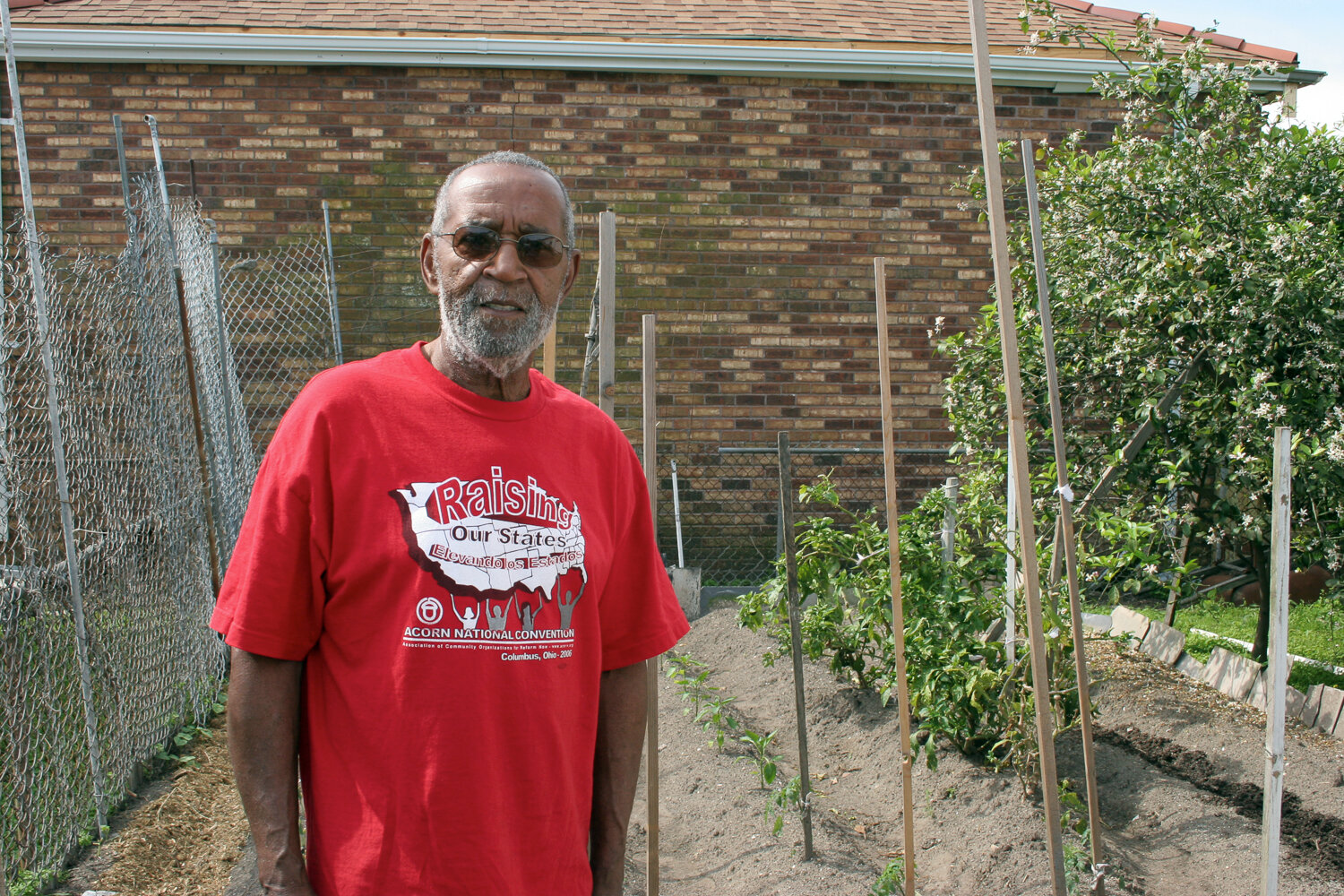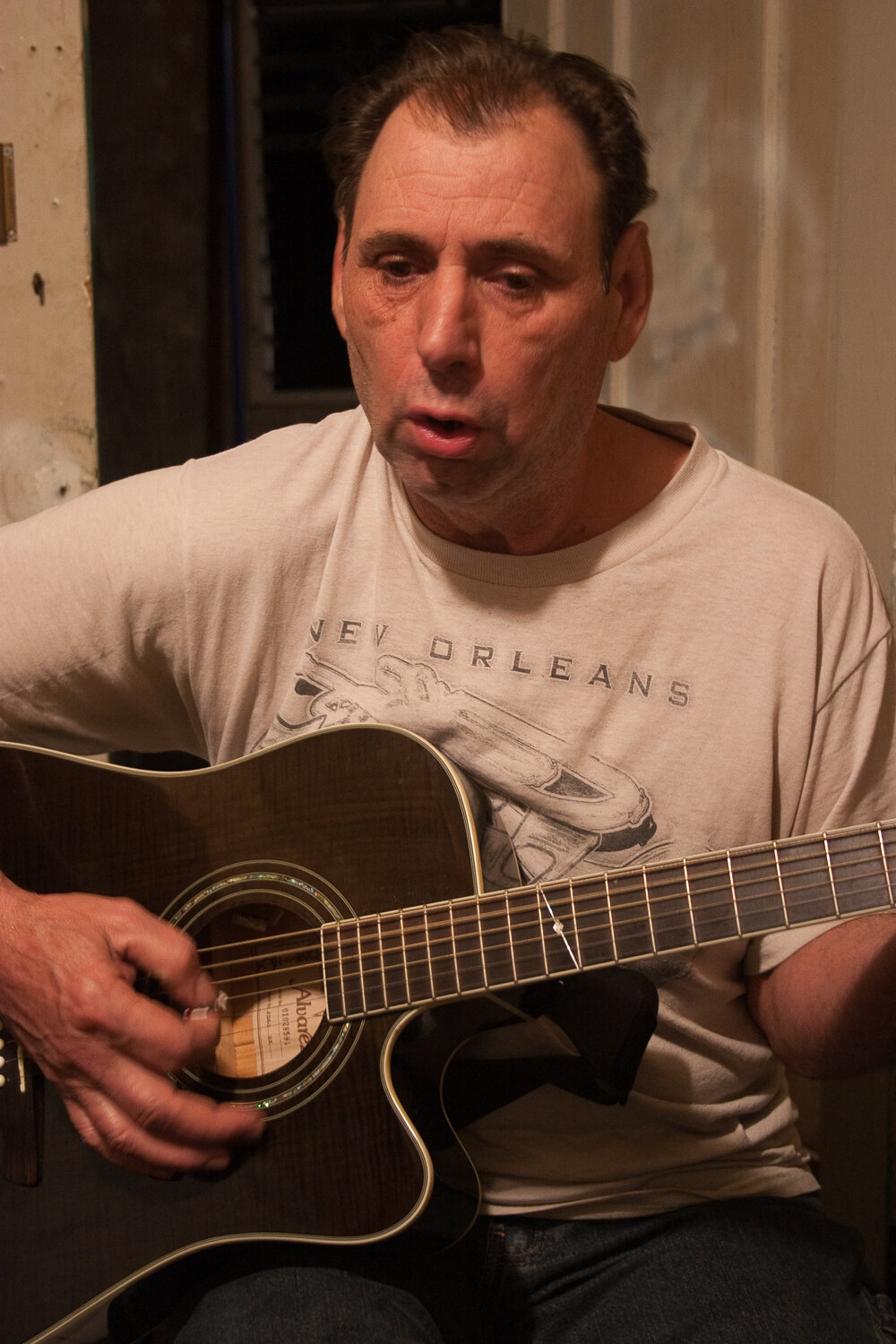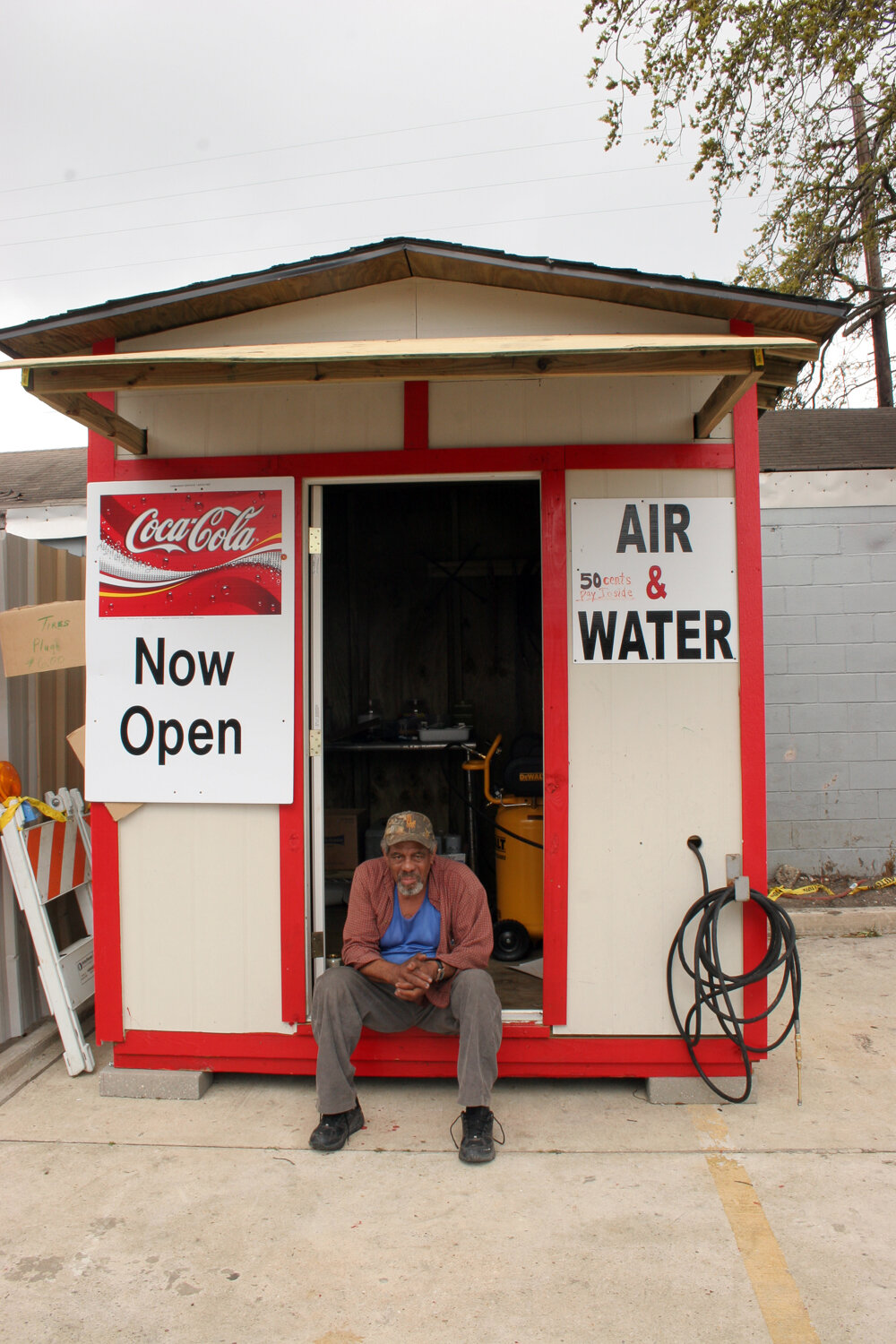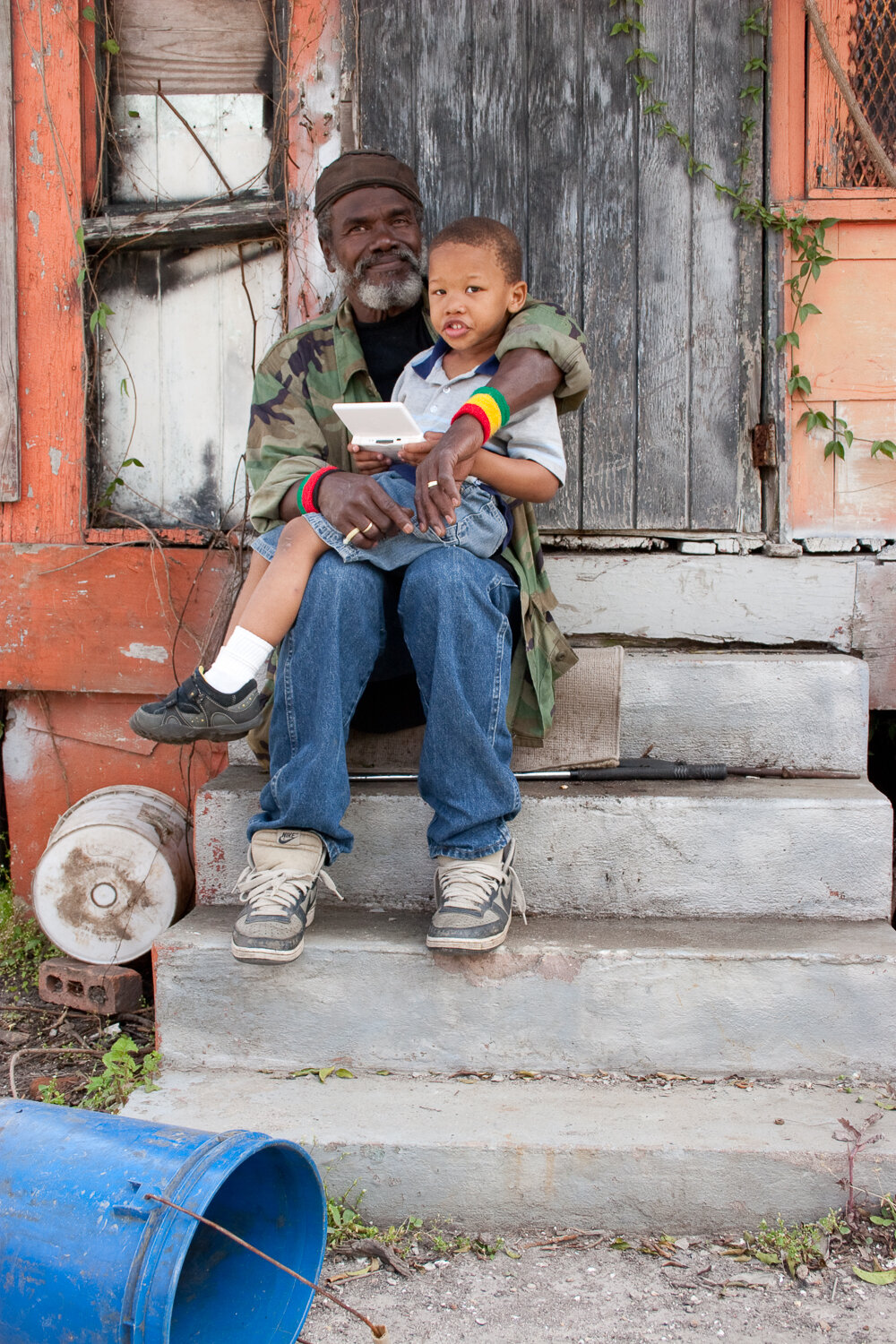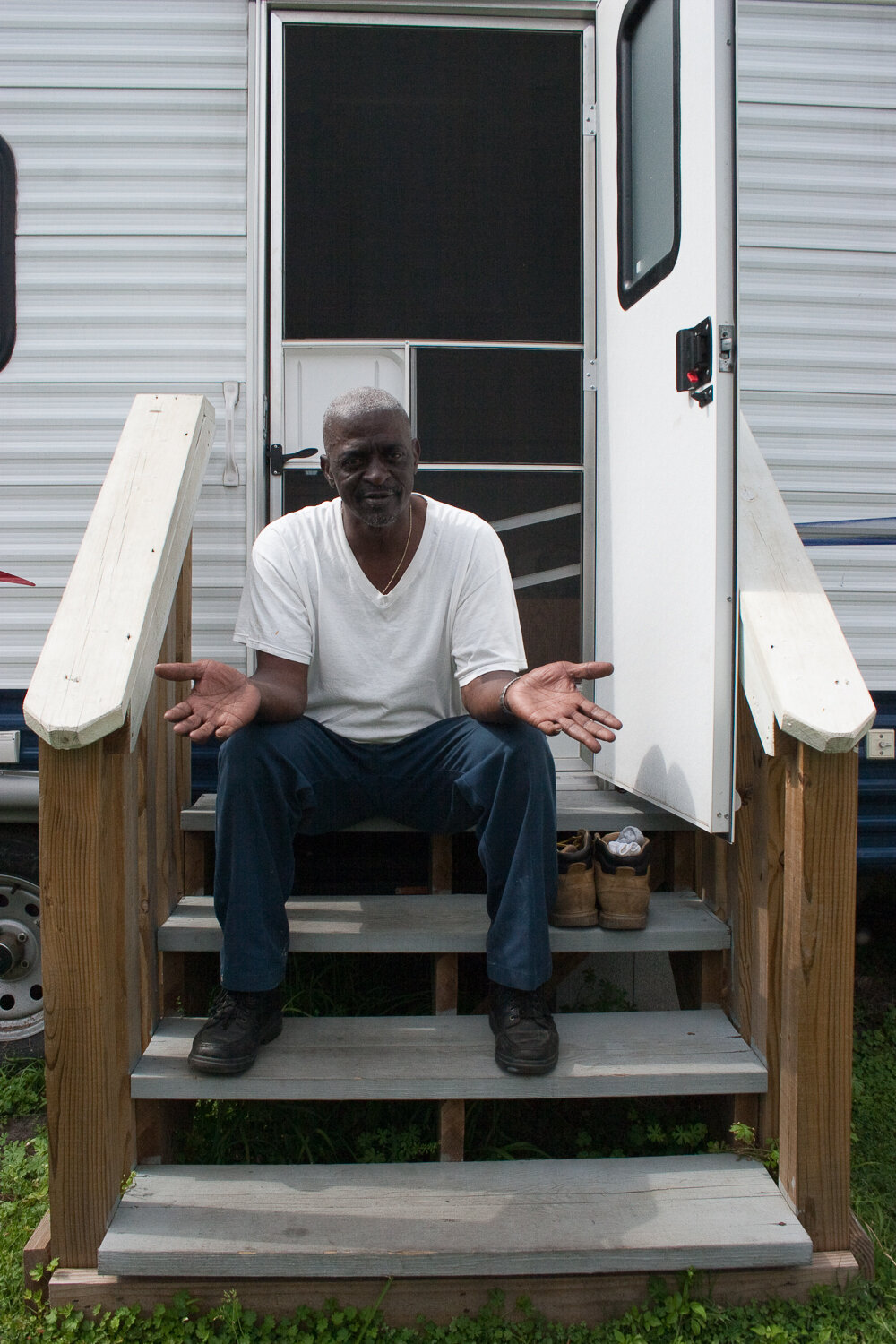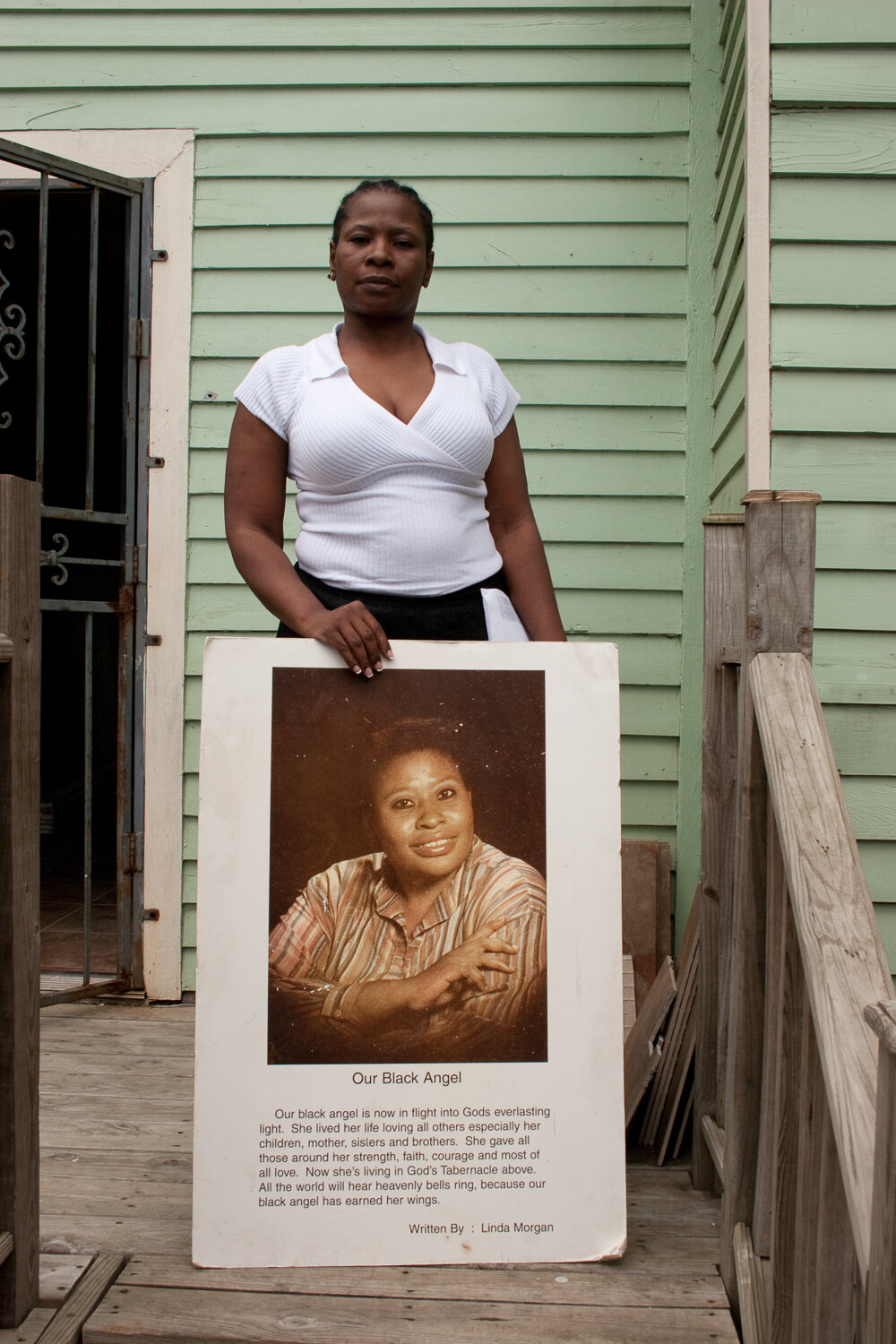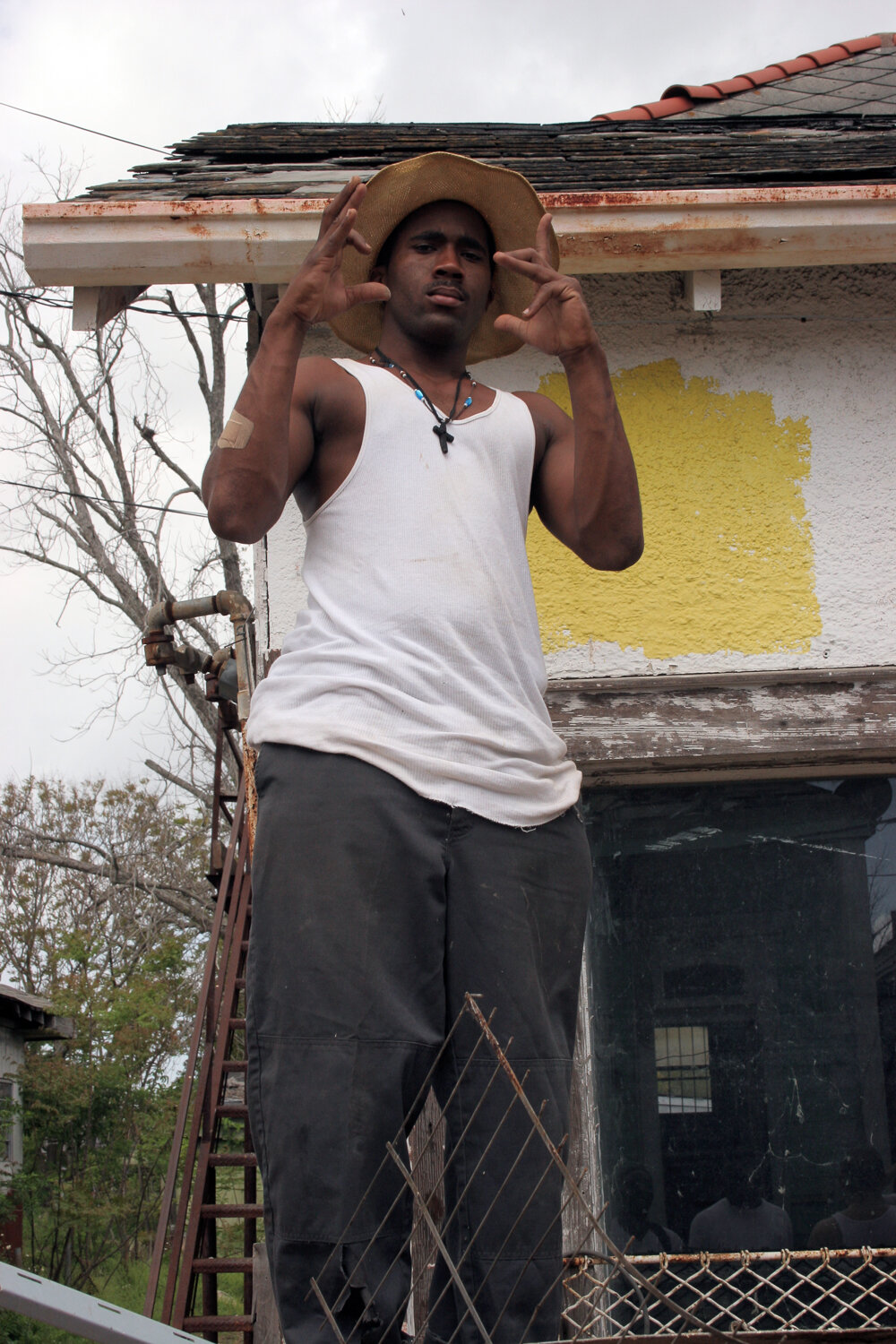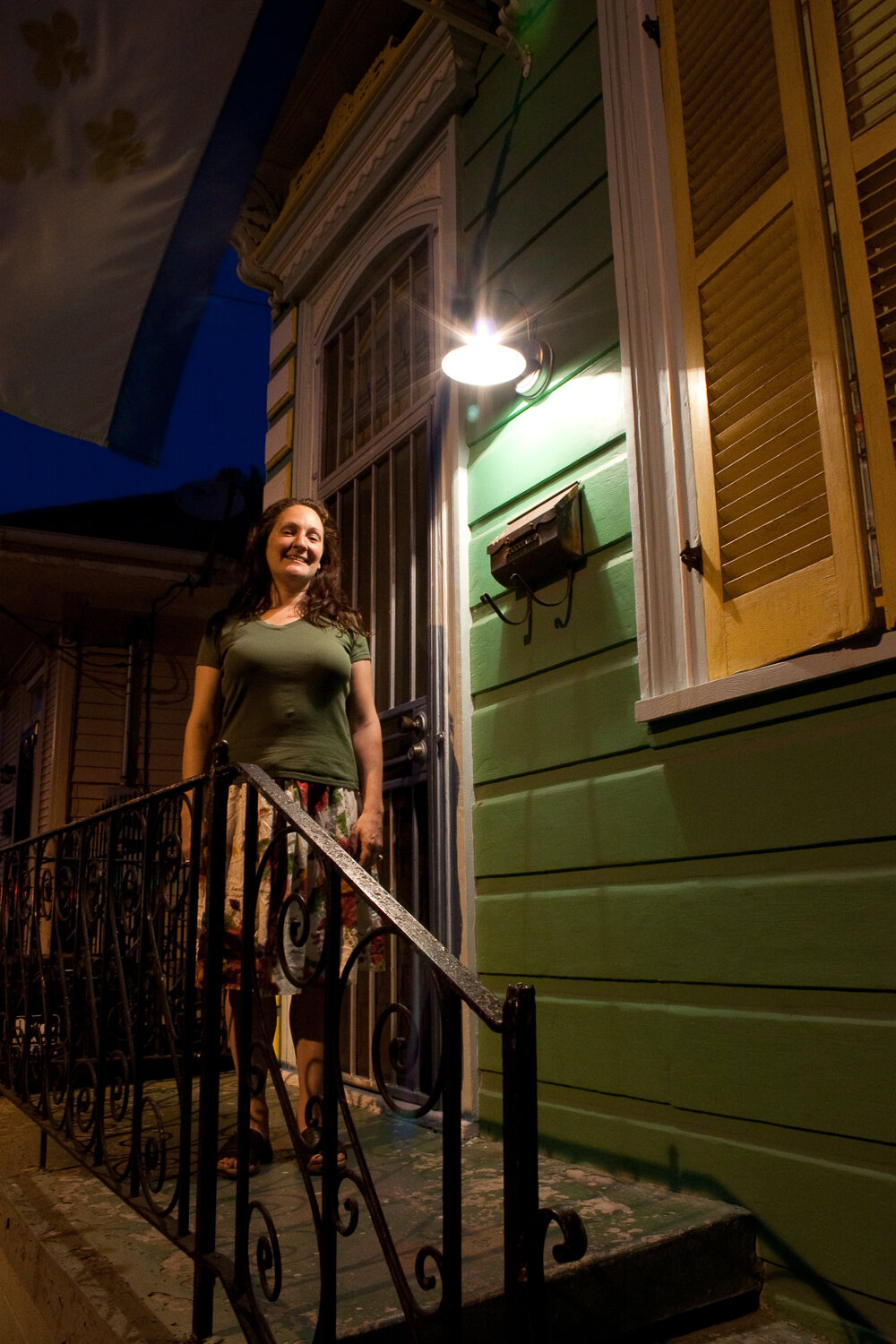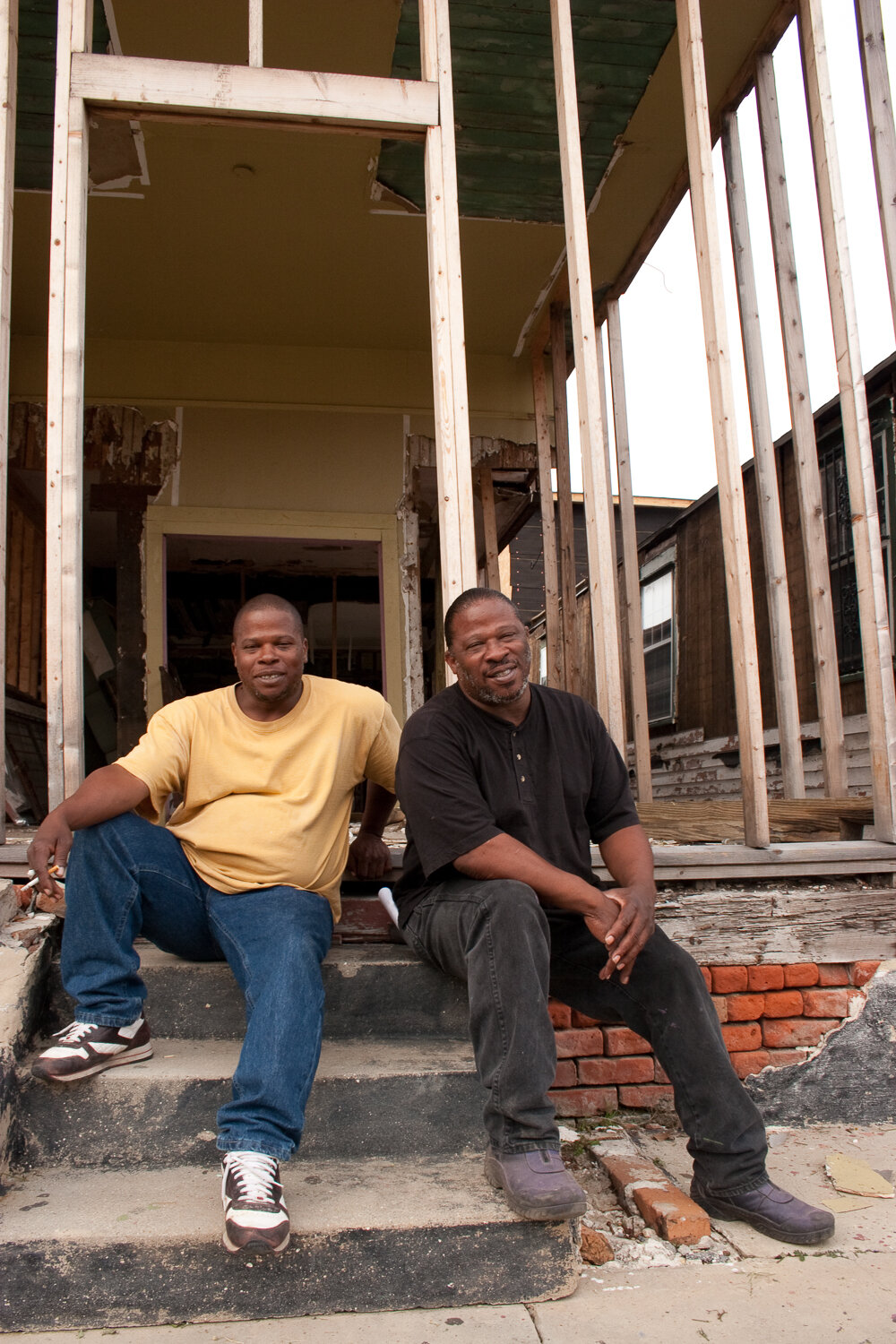Rebuilding the 9th Ward
Rebuilding the 9th Ward exhibition. John Hartell Gallery, Cornell University, 2007. Pedestals hold portable CD players playing looped audio of interviews with 9th Ward residents featured in the portraits.
During my Masters in City and Regional Planning at Cornell University (2006 to 2008), much of my time was committed to working on a community-based recovery plan for the Lower and Upper Ninth Wards of New Orleans, among the hardest hit areas by Hurricane Katrina. As part of the ACORN-University Partnership and the New Orleans Planning Initiative, I was involved in researching and writing The People’s Plan for Overcoming the Hurricane Katrina Blues (2007), which won the Student Project Award of the American Planning Association.
Having been back and forth between Ithaca and New Orleans and completed and analyzed a number of resident surveys, I was especially struck by some of the residents’ answers to open-ended questions, many of which did not fit neatly into the rigid analysis of survey data. I received the Arch Winter Fellowship for the Study of Southern Cities from Cornell to conduct follow-up interviews with residents, structured as an oral history and portraiture project. Collaborating with Ben Phelps-Rohrs, I interviewed residents about their experience rebuilding in an area which was often treated as beyond repair or unworthy of reconstruction. The result of this was a project called I knew then that it was all on me, which manifested in an exhibition of photographs and audio recordings funded by an award from the Cornell Council for the Arts. It was presented twice in New Orleans, at the Policy Link National Conference, at Carnegie Mellon University, and at Manchester Metropolitan University between 2007 and 2008. Selected portraits and interviews were also published in the multimedia online magazine Triple Canopy in a special issue focused on New Orleans.
I also published another piece with Phelps-Rohrs for the same issue of Triple Canopy called Tours and Detours: Walking the Ninth Ward, which was an extension of my exit project for my planning degree. Combining my photographs and texts with his ambient, binaural audio recordings, this piece explores how the isolation and neglect of the Ninth Ward has been the result of a succession of infrastructure, industrialization, and public housing projects in the city that served to further racially segregate the city. It focuses on the difficulty of walking through the area, constructed for the ease of railway, shipping, and automobile traffic, and examines the post-Hurricane Katrina landscape in a way that reflected upon the perversity of the then-emerging economy of “Katrina tours” for tourists and property investors.
In various forms, elements of these projects were also published in a printed anthology of Triple Canopy and in the book Rebuilding Community after Katrina. Tours and Detours has been incorporated into urban studies and cultural studies syllabi at The New School and Queens College, and I am occasionally invited to lecture on this work. The NYU Fales Library acquired Triple Canopy’s archive in 2015, a new milestone for web-based publications.
These projects were my first foray into integrating visual and auditory elements into urban studies research and my first engagement with landscapes of infrastructure and deindustrialization, so these projects were very formative for me. I suggest checking out the Triple Canopy pieces to listen to the audio (ideally with headphones), but below are some additional portraits from the project.
